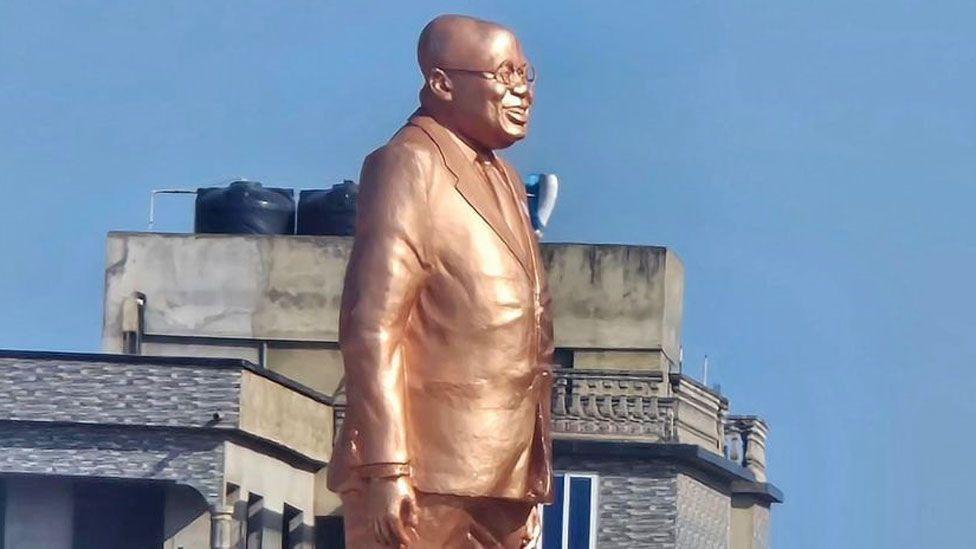Ghana’s outgoing President Nana Akufo-Addo recently faced a significant backlash on social media following the unveiling of a statue of himself during a tour of the Western Region. The monument, which is positioned outside the Effia-Nkwanta Regional Hospital in Sekondi, was established to commemorate the development initiatives that the president has implemented during his presidency. Despite the intentions outlined by the Western Regional Minister, Kwabena Okyere Darko-Mensah, many citizens perceived the statue as an act of “self-glorification,” diminishing its intended purpose and casting a shadow on the administration’s accomplishments.
Since the statue’s unveiling, responses have been overwhelmingly critical. Prominent figures such as opposition MP Emmanuel Armah Kofi-Buah took to social media platforms, particularly X, to express discontent, labeling the statue as a “self-serving display.” The sentiment among many Ghanaians is that there are pressing needs for public resources and attention, implying that resources spent on the statue could have been better allocated towards addressing the ongoing challenges in the region and across the nation. Critics argue that the president’s focus should rest on completing existing projects rather than memorializing his tenure through a personal monument.
Akufo-Addo, who is poised to leave office in January after two terms, asserts that he has fulfilled 80% of his electoral promises to Ghanaians. While addressing supporters during his “thank-you tour,” he highlighted several completed projects and policies he believes will leave a lasting impact. However, critics have pushed back against the statue’s symbolism by questioning the tangible benefits of his presidency, suggesting that allowing history to judge his contributions would have been more fitting than erecting a statue while in office. The mixed responses reflect a society grappling with issues of leadership accountability and the appropriate representation of political achievements.
There is a noticeable division in public opinion regarding the statue. While some citizens are calling for its removal, citing it as a wasteful expenditure, others defend the president, suggesting the statue symbolizes recognition of his contributions to Ghana’s development. Supporters laud the president’s initiatives, particularly the implementation of the free education policy, which they argue has had a significant positive impact on the youth of the nation. These supporters view the statue as a testament to Akufo-Addo’s legacy, with expressions of gratitude for the perceived advancements made under his leadership.
The unveiling of the statue occurred amid Akufo-Addo’s nationwide campaign tour to support his party’s candidate for the upcoming elections, Vice-President Mahamudu Bawumia. With upcoming elections featuring Bawumia against former President John Dramani Mahama, economic challenges such as high living costs remain pivotal topics of discussion among voters. The juxtaposition of the statue’s inauguration and ongoing electoral campaigns illustrates the complexity of Ghana’s political landscape, where perceptions of leaders’ legacies are intricately intertwined with the electorate’s current and future concerns.
The controversial statue highlights a larger narrative regarding leadership and public perception in Ghana, prompting discussions about how presidents are honored and remembered. As the nation prepares for elections, the reflections on Akufo-Addo’s presidency could influence political sentiments and decisions at the ballot box. The debate surrounding the statue’s presence will likely continue as citizens engage in discussions about what constitutes meaningful recognition for public leaders and the expectations of those in power to serve the nation’s interests over personal glorification. This situation is emblematic of the complexities and sensibilities of political legacies in contemporary governance.

